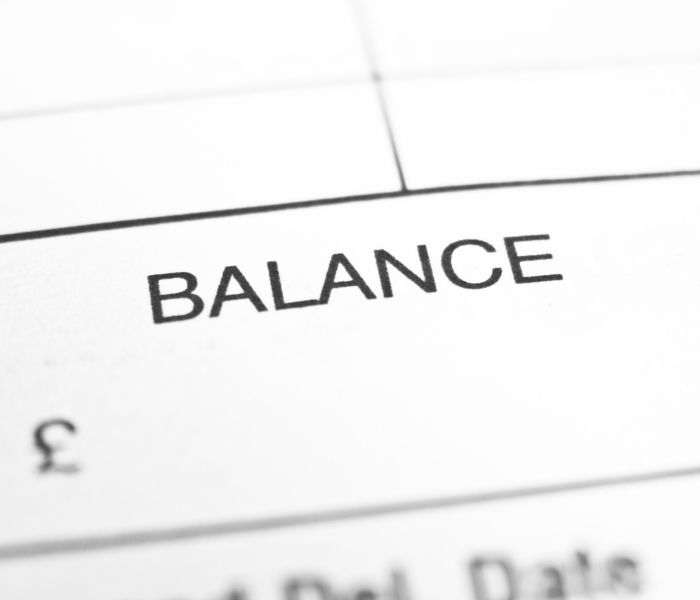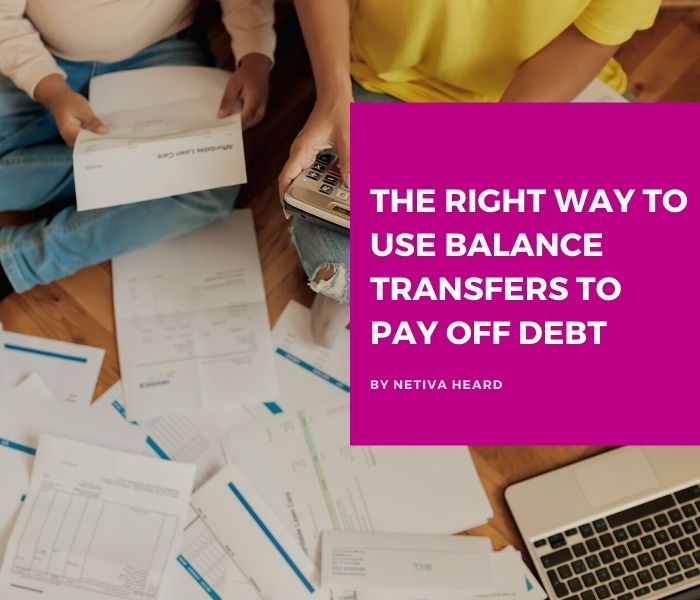Balance transfers are beautiful things. They’re one of the most popular debt consolidation methods that help you get rid of high-interest payments so you can pay off your debt faster.
But should you use balance transfers to pay off debt? And if so, how do you go about it the right way?
Here’s what you need to know to use balance transfers creatively.
What is a Balance Transfer?

Simply put, a balance transfer is the art of transferring one debt to another, usually at a lower interest rate. The idea is that if you transfer the balance on a high-interest credit card to a lower interest option, then you save money on interest and can pay off that debt faster.
Let’s say you racked up some charges on a credit card with a high APR. You can transfer that balance to a credit card with a lower APR. That means more of your monthly payment will go toward the principle instead of interest, allowing you to pay off the balance faster and save some money in the process.
Not all credit cards offer balance transfers. But if you have one that allows it or you get approved for a new credit card that offers this option, the process is quite simple.
One way is to write a check offered by your new credit card company to pay off the old debt. Once that’s settled, the balance will show up on your new credit account. Another way is to call your credit card company directly to initiate the transfer. You may be able to transfer some or all of the balance on a credit card to a new one, depending on credit limits and conditions.
Should You Use Balance Transfers to Pay Off Debt?

It’s not a matter of whether you can use balance transfers to pay off debt: the real question is whether it’s a good idea.
The answer is: it depends.
Many credit card companies will offer new customers a very attractive interest rate (usually 0% for a short time period) to get them to apply for the card. They will even tout the perks of a balance transfer. In many cases, this can be a great way to pay off debt.
But it’s not without its warnings.
Sometimes, there are balance transfer fees involved. This might be anywhere from 3% to 5%, depending on the card. So if you’re transferring a balance of $5,000, you’re looking at losing $150 to $250 before you see any benefits.
Also, what happens if you have not paid off your balance when the promotional interest ends and the actual interest rate begins? Whatever your balance is at that time will be subject to a spike – and this rate might even be higher than your old card!
However, when used correctly, a balance transfer can be a great way to pay off debt and save money.
Let’s say you had a balance of $5,000 at an APR of 18.9%, and you’re paying the minimum of $200 each month. At this rate, you’ll end up paying $1405 in interest and it will take you 33 months to pay off that debt if you don’t incur any new charges.
Now, let’s consider using a balance transfer to lower your costs. You score a new credit card with 0% APR for 12 months. After just one year, you will have paid off $2,400 (nearly half of your debt), all of which goes toward the principle. After that, your APR increases to 18.9%, which will cost you about $334 in interest and take 14 months to pay off in full.
See the difference? Use this credit card repayment calculator to plug in your own numbers!
The Smart Way to Use a Balance Transfer for Debt Reduction
There’s definitely a benefit to using balance transfers as part of your debt reduction approach, but you’ve got to be strategic about it.
First, consider the time frame in which you can feasibly pay off the new balance. If you only have 0% interest for six months, decide if that gives you enough time.
Also, look for any balance transfer fees. A fee shouldn’t be an automatic no, but you think to think how much you stand to gain from paying that fee. Make it make sense.
Last but not least, consider the interest rate once your introductory rate expires. Going from 0% to 24% is a huge leap and can quickly stall your progress.
Last but not least, weigh the balance transfer against other options, like a personal loan. You might find that a different type of credit option is better for your financial situation.
We know you’re serious about taking control of your finances. To get moving in the right direction, check out our free financial resource center.









